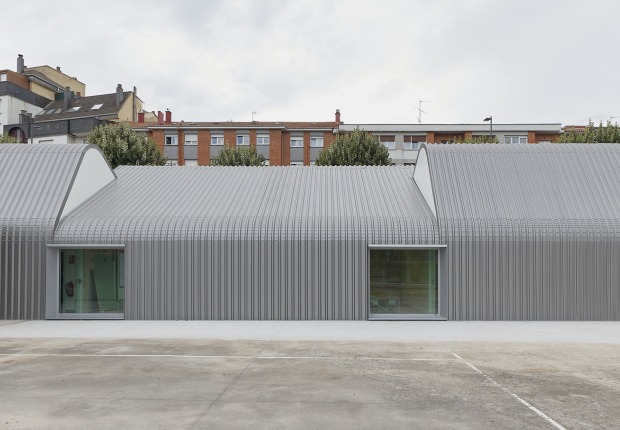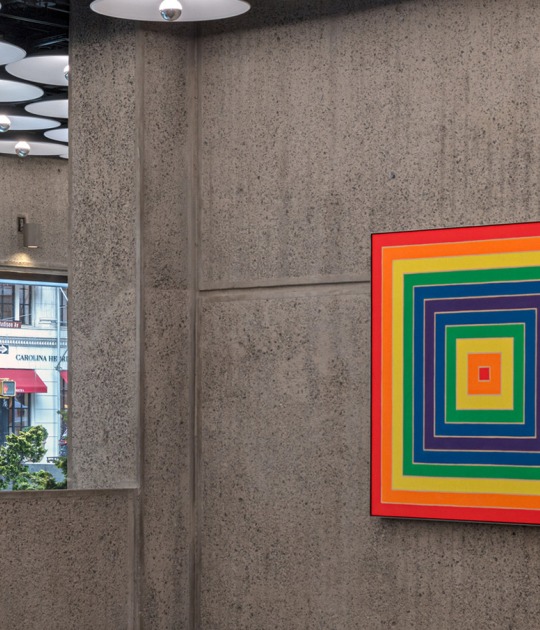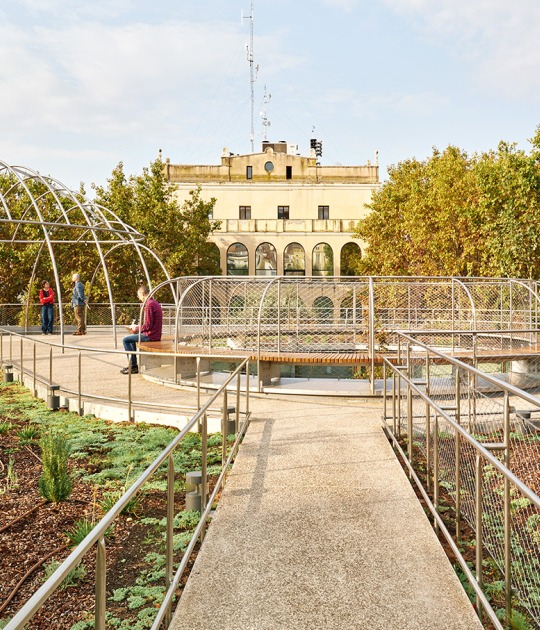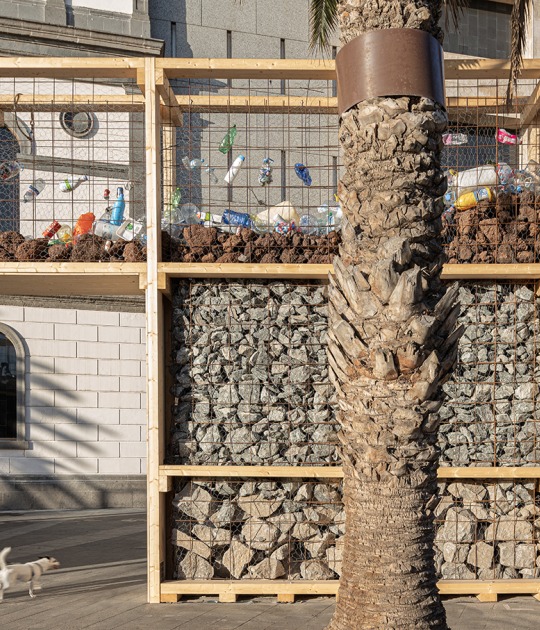The central cube is lifted off the ground to create a landscaped plaza. From there, a Public Loop – with portal windows open to views inside the three theatres – runs through the infrastructure and spaces for performing arts production that is typically hidden.

Taipei Performing Arts Centre by OMA. Photograph by Chris Stowers, for OMA.

Taipei Performing Arts Centre by OMA. Photograph by Chris Stowers, for OMA.
“It is extremely rewarding to see cultural creatives, audiences and visitors using the building both as we envisioned and in unexpected ways. The theatre culture and the vibrant street culture coexist in this public building and around the site. For us, this mix of cultures aptly captures the energy of Taipei, a city always open to changes."
“TPAC presents to the citizens of Taipei a peculiar yet familiar place. In many ways, it is new, foreign and extraordinary; but at the same time, it is friendly, intimate and amicable. It fits perfectly into the eccentric characteristics of Taipei and people love it. It is a truly public building in its fullest sense.”

Taipei Performing Arts Centre by OMA. Photograph by Shephotoerd Co. for OMA.

Taipei Performing Arts Centre by OMA. Photograph by Chris Stowers, for OMA.

Taipei Performing Arts Centre by OMA. Photograph by Chris Stowers, for OMA.
Project description by OMA
An ancient art form for civic participation, theater has evolved into the modern world as a vocation of the culturally refined, with its significance in daily life diminished. Theater space is valued for its potency for formal cultural productions, rather than its power to include and divert, and to be instantaneous. Contemporary performance theaters increasingly become standardized: a combination of two different-sized auditoria and a black box, with conservative internal operation principles for authentic work. Can a public theater still be inclusive, accommodating the classic and the serendipitous, the highbrow and the masses, the artistic and the social—a place for the creative life of all?
Located at Taipei’s Shilin Night Market marked by its vibrant street culture, Taipei Performing Arts Center is architecture in limbo: specific yet flexible, undisrupted yet public, iconic without being conceived as such. Three theaters plugged into a central cube allow performing spaces to be coupled for new theatrical possibilities. The cube is lifted off the ground for a Public Loop to extend the street life of Taipei into the theater. New internal possibilities and connections of the theater generate different relationships between producers, spectators, and the public, also a critical mass that works as a fresh, intelligent icon.
The central cube consolidates the stages, backstages, support spaces of the three theaters, and the public spaces for spectators into a single and efficient whole. The theaters can be modified or merged for unsuspected scenarios and uses. The spherical 800-seat Globe Playhouse, with an inner and an outer shell, resembles a planet docking against the cube. Intersection between the inner shell and the cube forms a unique proscenium for experimentation with stage framing. Between the two layers of shells is the circulation space that brings visitors to the auditorium. The Grand Theater, slightly asymmetrical in shape and defying the standard shoebox design, is a 1500-seat theater space for different performing arts genres. Opposite to it and on the same level is the 800-seat Blue Box for the most experimental performances. When coupled, the two theaters become the Super Theater—a massive space with factory quality that can accommodate productions that are otherwise only possible in found spaces. New possibilities of theater configurations and stage settings inspire productions in unimagined and spontaneous forms.
The general public—with or without a ticket—is invited into the theater through a Public Loop, which runs through the theater’s infrastructure and spaces of production that are typically hidden. Portal windows along the Public Loop allow visitors to look at the performances inside and technical spaces in between the theaters.
Different than typical performance centers that have a front and a back side, Taipei Performing Arts Center has multiple faces defined by the theaters protruding above ground. With opaque facades, these theaters appear as mysterious elements against the animated and illuminated central cube clad in corrugated glass. A landscaped plaza beneath the compact theater is an additional stage for the public to gather, in this dense and vibrant part of Taipei.






















































































